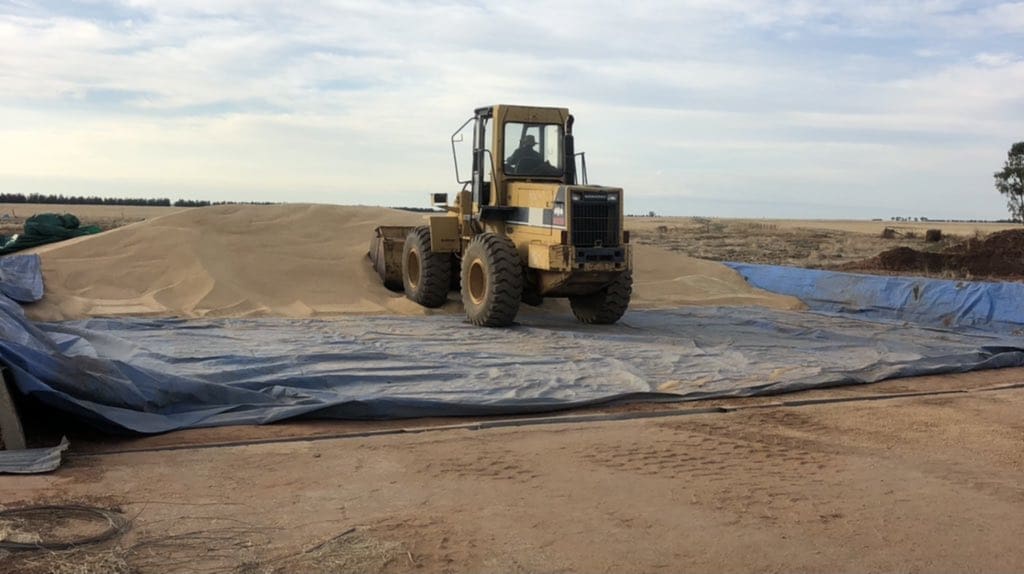
A Boree Creek grower empties a temporary wheat storage post harvest. Photo: Col Richens
PRICES for wheat and barley have firmed in the past week, as heady export demand supported by some domestic trade shorts book tonnage for delivery in coming weeks.
In the longer term, falling numbers of cattle on feed are expected to temper demand for barley in the north, where a big sorghum crop is expected to start hitting the market in March.
Internationally, Australian wheat and barley are at very low basis levels, and have not factored in the full leap in world values fuelled by last week’s USDA reports, and by looming Russian export taxes.
This means domestic consumers are having to buy in a firming market, but are limiting their coverage in the hope of an easing in prices in the near term.
| This week | Last week | Change | |
| Barley Downs Feb | $277 | $275 | Up |
| Barley Melbourne Feb | $255 | $235 | Up |
| Wheat Downs Feb | $318 | $313 | Up |
| Wheat Melbourne Feb | $315 | $310 | Up |
| Sorghum Downs Mar-Apr | $320 | $310 | Up |
Table 1: Indicative prices in AUD per tonne.
Feedlot demand subdued
Numbers of cattle on feed are believed to be contracting, a function of feedlots being unable to buy enough feeder cattle to sustain numbers.
Feeder cattle are in very short supply, and trading at record prices as feedlots compete with restockers who are looking for mouths to put on to mostly plentiful paddock feed.
Trade sources report numbers of cattle at some feedlots has fallen to 50-80 per cent of capacity in recent months, and this has automatically extended their grain coverage.
“Consumer interest in buying grain now is quite low,” one northern trader said.
“All the activity we’re seeing now is coming from the trade covering short positions.”
Some feedlots had advanced their coverage earlier this month out to late February, but with less mouths to feed, now find themselves covered well into April.
“Growers are wanting to sell some March-April barley now, but we just don’t need it.”
Exports fuel southern strength
The basis price on Australian wheat and barley is extremely low.
“We’re at multi-year lows for basis, and we’ve still only priced in about half of the rise that global cash markets have,” GeoCommodities broker principal Brad Knight said.
The cheap basis and the sharp rise in export value have driven January/February demand in south eastern Australia. It’s coincided with regular monthly stockfeed processor demand, whose modest risk appetite sees them buying grain only a month or two ahead of themselves.
“Domestic processors can’t go long, so they’re buying what they need to keep them going.”
“Domestic consumers went into harvest on the short side because they knew there was a big crop, and now they’ve found barley is up $20 on where they could have been buying at harvest.”
They are facing competition from container packers chasing tonnage on short notice, as a limited number of boxes become available, and from exporters looking for final parcels to make up bulk shipments.
In southern New South Wales, Godde’s Grain trader Peter Gerhardy said grower selling was limited.
“There’s a little bit of coming on to the market from temporary storages like silo bags and field bins, and some from grain sites,” Mr Gerhardy said.
“It’s a typical January.”
The difference is that prices are climbing.
“Markets have firmed based on the export movements, and on logistics.
“Logistics is becoming a bit of a nightmare.
“Containers are very scarce, and the packers don’t get a lot of notice when they’re arriving.”
Grain Central: Get our free cropping news straight to your inbox – Click here
